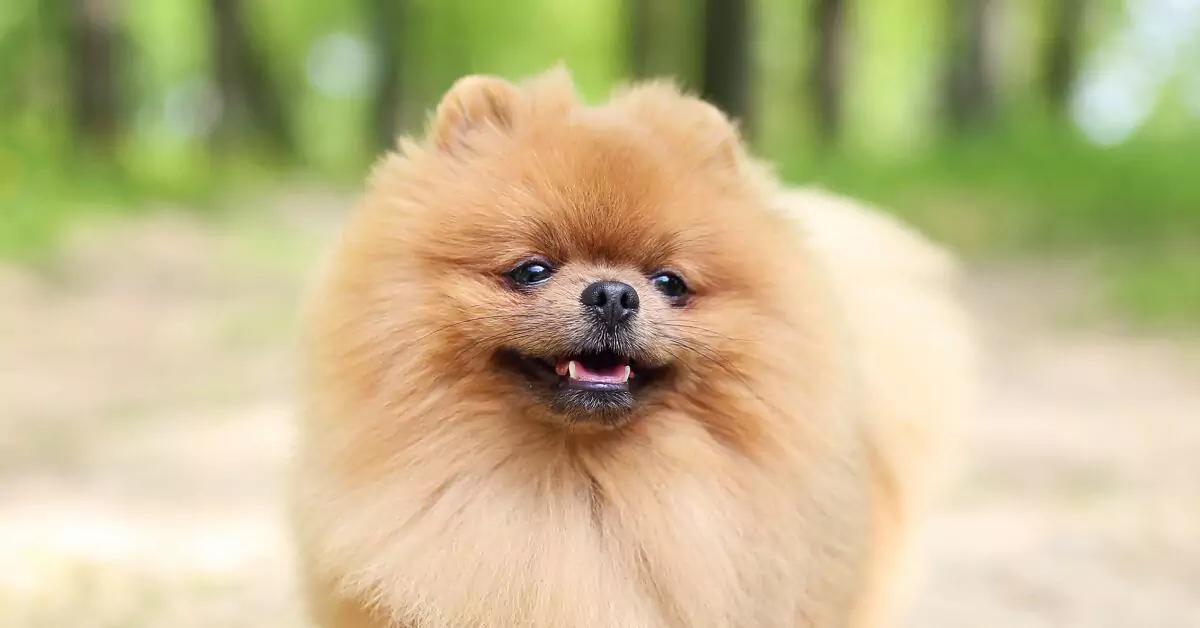
Meet the Pomeranian
High Doggy I.Q.
Protective Pooch
Best Fur Friend
My Many Looks
My Breed Characteristics
Furbulous Fact
As I Grow Up
History of My Breed
Care Tips
Training Tips
Personality
Feisty
Curious
Alert
Group
Toy Group
Origin
Pomerania (a region in Germany & Poland)
Life Span
12-16 years
Breed Popularity
#23 of 195
Height Range
6-7 inches
Weight Range
3-7 pounds
Coat Details
Type
Straight outer coat and dense undercoat
Texture
Features
Colors
Beaver, Black, Black & Tan, Blue, Blue & Tan, Blue Merle, Blue Sable, Chocolate, Cho
Hypoallergenic
Cost to Buy
$600-$2,000
Lifetime Care Cost
$17,925
My Many Looks
My Breed Characteristics
Furbulous Fact
As I Grow Up



History of My Breed
Care Tips
from Dr. Jessica Greenberg, Associate VeterinarianGet X-rays early to detect orthopedic problems.
Pomeranians are prone to knee problems like luxating patellas, and should be evaluated early to prevent arthritis later in their lives. There are different degrees to which they can be affected by this condition, and they may need medication to help prevent ongoing problems. -MicheleKing,DVM
Monitor your Pomeranian’s heart closely as they age.
Pomeranians may develop heart disease as they get older, so taking your pet for semi-annual examinations is important. This will allow your veterinarian to check for heart murmurs or arrhythmias. -EricaM.Irish,DVM
Routine dental care is key to avoiding gum problems.
Pomeranians are tiny dogs who are prone to periodontal disease, so routine in-home dental care and annual cleanings are a must. -EricaM.Irish,DVM
Training Tips
from Dr. Jessica Greenberg, Associate VeterinarianBe patient while your Pomeranian is house-training.
Pomeranians are affectionate and are eager to please. They are a joy to train for this reason, and respond quickly to positive reinforcement and praise. These dogs can be difficult to potty train, however, and will need to be worked with consistently during puppyhood and even into adulthood to help teach them where the potty should be used. Beginning early, secure them in a small place like a puppy playpen, and take them outside every couple of hours. Praise them enthusiastically for going potty outside. Repeat this often as you expand the Poms boundaries in your home. -JenJones,CertifiedDogTrainer
My Many Looks
My Breed Characteristics
Furbulous Fact
As I Grow Up
History of My Breed
Care Tips
Training Tips
-
Personality
Feisty
Curious
Alert
-
Group
Toy Group
-
Origin
Pomerania (a region in Germany & Poland)
-
Life Span
12-16 years
-
Breed Popularity
#23 of 195
-
Height Range
6-7 inches
-
Weight Range
3-7 pounds
-
动物皮毛
Type
Straight outer coat and dense undercoat
Texture
Features
Colors
Beaver, Black, Black & Tan, Blue, Blue & Tan, Blue Merle, Blue Sable, Chocolate, Cho
-
Hypoallergenic
-
Cost to Buy
$600-$2,000
-
Lifetime Care Cost
$17,925



